The CD is not a direct recording of uncompressed audio data. There are techniques in place to ensure that the data is read as accurately as possible with each track.
■ CD Data Structure
The data structure of an audio CD is as follows:
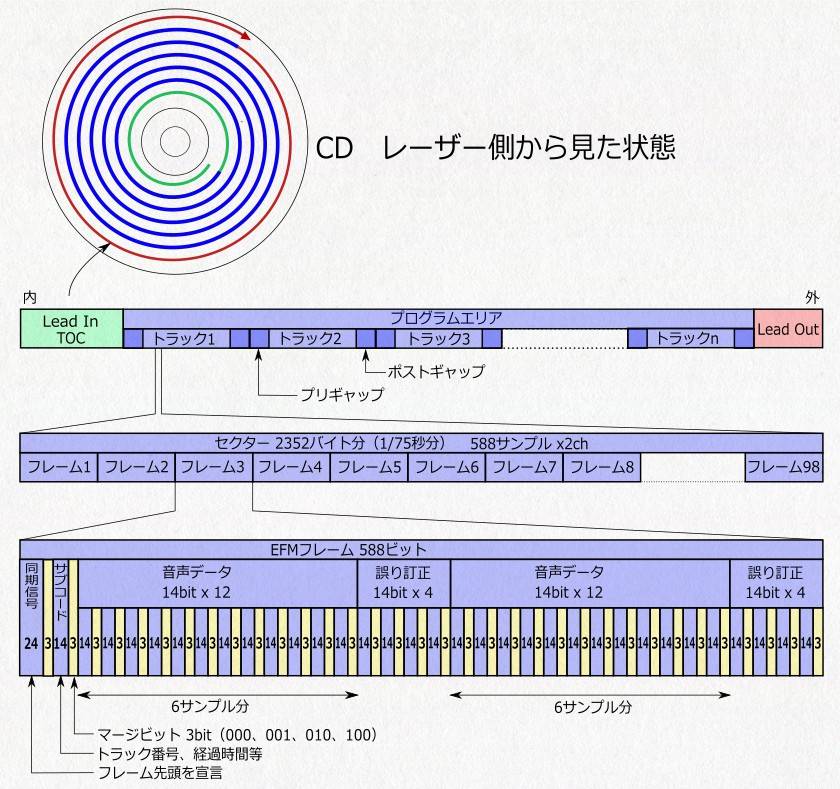
■ Lead-in and Lead-out
A CD is read in a spiral pattern starting from the inner ring. It begins with a section called the "lead-in." This area contains information that’s like the table of contents of the CD; it includes the time data for each track and the total playback time. After that, there is the area where the track data is recorded. When all the tracks are played, the CD enters the "lead-out" area and ends the playback. The lead-out contains only 90 seconds of silence and does not store any special information.
The length of the spiral track can be easily calculated because the linear velocity is constant. With a linear velocity of 1.25 m/sec, up to 74 minutes of audio can be recorded, which would require 5,550 meters of tracks. So, on a 120mm diameter disc, there is over 5 kilometers of track.
Between the tracks, there is an area known as the "gap," which represents a period of silence. If the gap time is set to 0, the next track will start without any interruption. This feature is useful for live albums, where the aim is to remove any gaps between the tracks.
Track data is managed in units called sectors. A sector contains data for 1/75th of a second, so 75 sectors are required to play one second of audio. Within each sector, there are 98 EFM (Eight-to-Fourteen Modulation) frames.
■ EFM (Eight to Fourteen Modulation)
The internal structure of an EFM frame is complex. A 24-bit synchronization signal always starts at the beginning of the frame, followed by subcodes, with the P and Q channels used in CD-DA. These channels contain data such as track numbers and time. After that, audio data is included along with error correction data. Additionally, 3-bit merge bits are inserted between each piece of data. These are mechanisms to prevent consecutive 1s or isolated 0s.

As shown in the diagram, the pit lengths of a CD are defined as nine types from T3 to T11. The number of consecutive 0s is restricted to between 2 and 10, and consecutive 1s are not allowed. To achieve this rule, EFM is used. As the name suggests, it is a system that converts 8 bits into 14 bits. Although the audio signal on a CD is 16 bits, it is split into two 8-bit segments, and each of these 8-bit segments is converted into 14 bits.
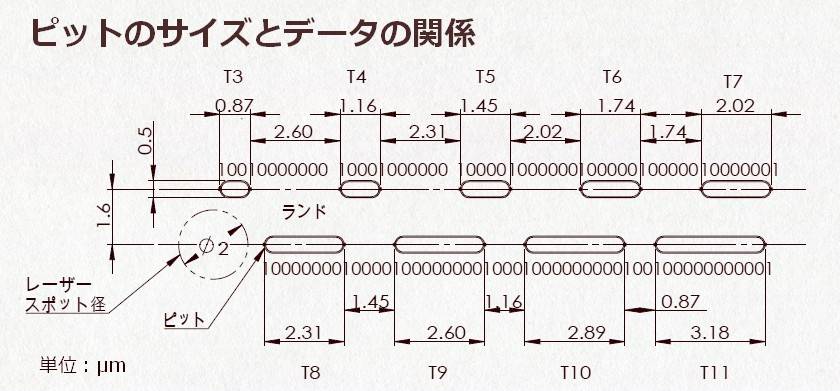
The conversion is done according to the table below. Since it's 8 bits, the conversion list ranges from 0 to 255. The EFM frame has a total size of 588 bits, but as audio data, it only contains the equivalent of 12 samples (6 samples x 2).
| 10 decimals | 2 decimals (8-bit) | EFM(14-bit) |
| 0 | 00000000 | 01001000100000 |
| 1 | 00000001 | 10000100000000 |
| 2 | 00000010 | 10010000100000 |
| 3 | 00000011 | 10001000100000 |
| 4 | 00000100 | 01000100000000 |
| 5 | 00000101 | 00000100010000 |
| 6 | 00000110 | 00010000100000 |
| 7 | 00000111 | 00100100000000 |
| 8 | 00001000 | 01001001000000 |
| ・ | ・ | ・ |
| ・ | ・ | ・ |
| 255 | 11111111 | 00100000010010 |
■ Merge Bits
If we convert 255 and 1 into 14-bit EFM format, it becomes 00100000010010 and 10000100000000. If we connect them directly, we get:
00100000010010 10000100000000
In this case, the 0 at the junction is isolated, so we need to use one of the four merge bits to prevent the isolated 0. The merge bit that can be used here is "000".
0010000001001 000 010000100000000
The merge bit doesn't have any data significance, but it is an essential component to ensure the rules are followed.
■ Error Correction: CIRS (Cross-Interleaved Reed-Solomon)
Error correction refers to the system that repairs inaccurately read bits and restores them to the original signal. In reality, it's difficult to read the data accurately with just one optical trace as errors of several bits per second occur. Therefore, error correction is essential. The CIRS used in CDs combines two error correction methods: Cross-Interleave and Reed-Solomon. It’s a highly reliable error correction system, and as a result, errors on a CD are reduced to about 1 bit. If the condition of the disc is good, it can be considered that errors are virtually nonexistent.
■ Cross-Interleave
Cross-Interleave is an effective method for dealing with long errors. By distributing the data across the CD, Cross-Interleave avoids long errors caused by dirt or scratches. In other words, the data is not arranged along the time axis but is dispersed across the CD. After reading the data, the data is reassembled into its original time axis, restoring the audio signal.
■ Reed-Solomon
Reed-Solomon is an effective method for short errors that occur frequently. These errors are common in optical reading. It has multiple mechanisms for recovering unreadable or misread data by combining it with surrounding data. One method involves calculating the sum of the data, so even if part of the data is lost, it can be reconstructed from the sum. Another method uses simultaneous equations to restore the data more powerfully. In simple terms, it's a system that checks and verifies the data that has been read.
■ CD Audio Data Percentages
The above describes the overall structure of data recorded on a CD. When we look at just the frames of the audio data on a CD, only 12 samples are included in the total 588-bit frame. The final converted data becomes 16 bits x 12 samples = 192 bits. If we compare this, the audio data makes up only about 33% of the total frame. Alternatively, if we calculate based on EFM with 14 bits, 57% of the data is audio. When including the margin bits, about 70% of the data is audio. The remaining 30% is mainly data used for error correction. Looking at it this way, it may seem like a lot of the space is taken up by non-audio elements, and it could appear to be inefficient, but these elements are indispensable for accurately restoring the data.
The “sound & person” column is made up of contributions from you.
For details about contributing, click here.











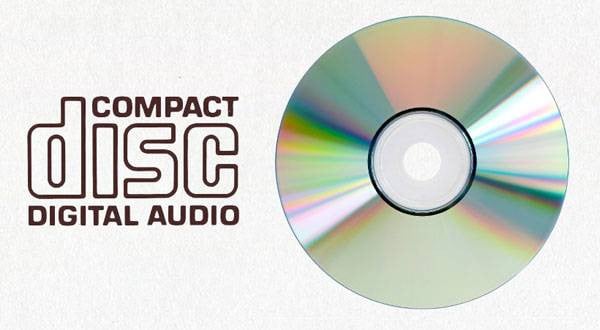
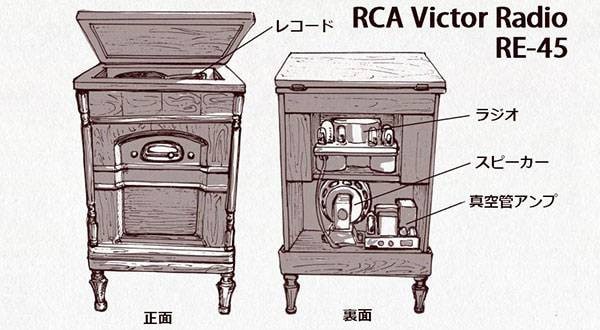
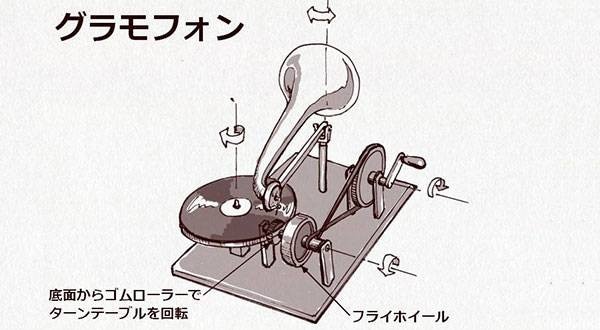
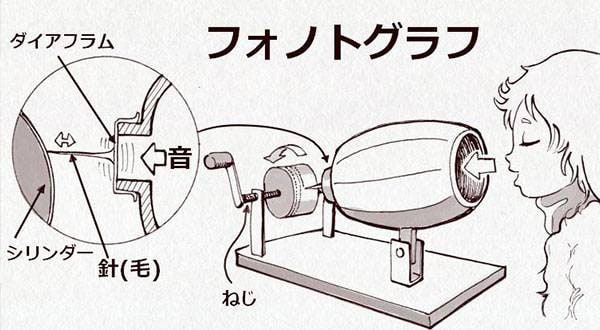
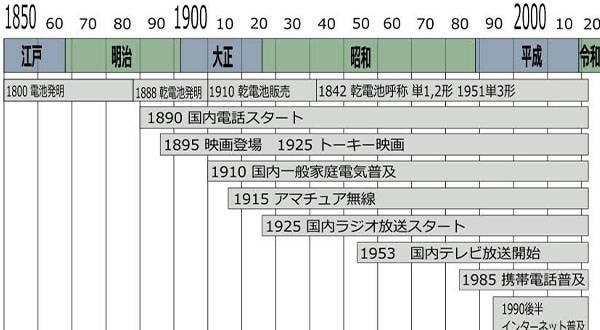
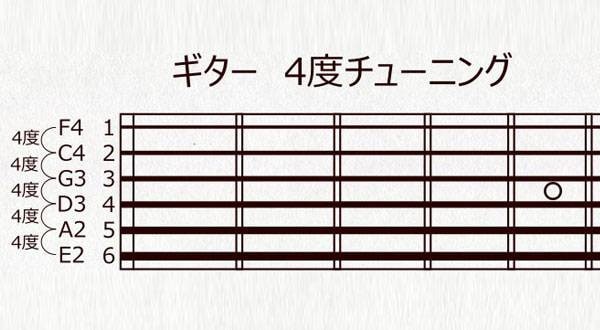
 PC向けDJソフトの選び方
PC向けDJソフトの選び方
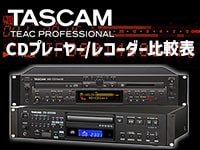 TASCAM CDプレーヤー/レコーダー比較表
TASCAM CDプレーヤー/レコーダー比較表
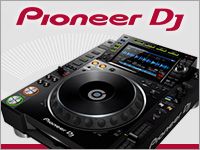 PIONEER DJ 比較表
PIONEER DJ 比較表
 YAMAHA CD-S303RK
YAMAHA CD-S303RK
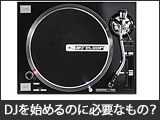 DJを始めるのに必要なもの?
DJを始めるのに必要なもの?
 DJ入門講座
DJ入門講座















